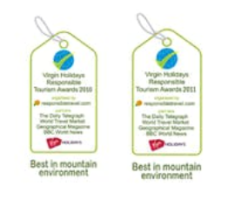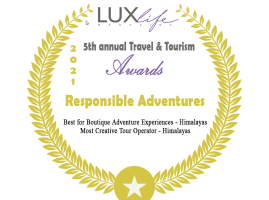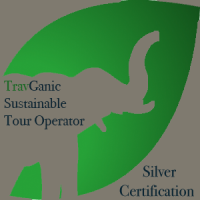What is Monsoon trekking in Nepal like?
The monsoon begins around mid-June; it peaks during July-August and winds down in early September. As a result, the temperature increases, as do the humidity and rain. Although clouds often cover the mountains, temperatures can get uncomfortable in the lower elevations and showers almost daily. You may even find yourself acquainted with leeches in the lower areas, but fear not – leeches don’t climb as high as we do!
So, where should you trek in the monsoon? We say, go to the northern side of the Himalayas, known as the rainshadow.


What to expect during the monsoon
When trekking in the lower altitude forests, you can expect a dense build-up of fog and clouds. However, the clouds occasionally clear up to reveal the stunning mountains and valleys. This happens especially after a night of heavy rain. You can expect anywhere from 4-6 hours of rain varying in intensity; occasionally, it can rain continuously for 2-3 days.
Trekking tips for monsoon treks
It is better to start your day early; generally, it starts raining in the afternoons. However, there tends to be a pattern in the weather; ask your guide or local lodge owners how it has been for the past week or ten days. Although the trend is not guaranteed, you have something to go by to make plans accordingly.
Recommended gear for the monsoon
It is best to have an umbrella in the lower elevations – if you don’t use trekking poles – because it will be sweltering even with the best quality raingear. I prefer to trek in the rain without rain gear; I feel it is better to get wet from the rainwater than my sweat. Also, the humidity and temperatures drop as you gain altitude, making it more pleasant. However, it can still rain, and it is advisable to put on rain gear at higher elevations. Sometimes the humidity is so high that even quick-dry clothing won’t dry overnight!
Transportation during the monsoon
Getting to the trailhead can be the primary challenge during this season, as flights can be delayed by poor visibility, and roads can be muddy or even blocked by landslides. It is always better to have a couple of extra days to factor in delays and give yourself a safe buffer. If you plan to fly in or out of your start/endpoint, find out if there is an alternative road route close by and ask if the road is open.
Advantages of Monsoon Trekking
You might see a few other trekkers on the trail. You could be just the only person/s staying at the lodge. You will get lush vegetation, and the farmland is busy with livestock and farmers. You get to smell the fragrances of plants, trees, and soil. In the higher elevations, you will see beautiful giant moths. You might get to eat freshly harvested wild vegetables, herbs, and mushrooms at the lodges you stay in. Plus, the sound of the rain helps you fall asleep quickly and slumber deeply.
Given it’s the ‘off-season,’ your inn-keepers, guides, and porters will also appreciate your business much more. But unfortunately, the off-season is a hard time for those active tourism.


Hazards that come with trekking during the monsoon:
Trekking trails can be muddy and slippery. Be careful of slippery roots when trekking through forests. Landslides can be a hazard; walk briskly with utmost caution when you cross landslide areas on the trail. DO NOT stop to take photos in the middle of the landslip area if two or more of you take turns crossing the landslide area while the other person looks out for falling rocks.
Leeches can be an annoyance while trekking in Nepal during the monsoon. Take a small pouch of rock salt and chewing tobacco mixture; dab it on the leeches when they get on your boots, clothes, or you. You must dip the pouch in water to moisten it for better effect. Some people burn leeches or use Dettol or regular salt. However, the rain can wash them off, making rock salts and chewing tobacco mixture a preferable choice.
Thunder and Lightning storm
It is not regular, but occasionally there might be thunder and lightning or storms. Seek refuge in a vehicle or grounded building when lightning and thunder begin. In case you are caught in a storm:
- If you are far from a vehicle or a building, stay clear from tall objects like trees, electric/telephone poles, and bodies of water. Instead, find a depression or a low spot and make yourself as small as possible – DO NOT lie down on the ground.
- If you are a group, spread yourselves 50-100 feet away to avoid multiple victims, as lightning can travel along the ground.
- If you are indoors, avoid taking showers or laundry and charging your phone or other gadgets.
- Stay indoors for at least 30 minutes after the last seen lightning or since the last thunder.
- As mentioned before, landslides could block the roads, or flights can get cancelled due to bad weather.


Monsoon 2020
We experienced almost double the rainfall in June and July. This caused landslides and floods in Nepal, bringing death and destruction.
Trekking regions that fall into the Rainshadow areas are listed below:
















